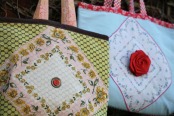I’ve got two super exciting announcements, on two totally different topics (or are they . . .?).
Anyway, first, my new website is finally live! I love it so much, and I adore the design my friend Claudia did! That color is now called Judi Aqua. I’ll be sharing more about it in the coming weeks. I’ll still be blogging here for my crafty friends, but I’m also starting a newsletter (where craft-related stuff will certainly pop in from time to time). So, if you want to join my newsletter list and hear from me (either once a week, or once every other week—haven’t decided yet), then click through here, and use the signup box on the right. You can also download a few chapters of my eBook. No spam. No craziness. Just me, communicating with you.
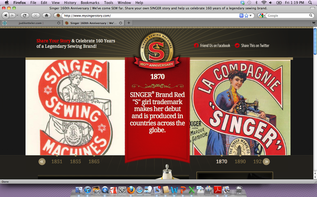 So, from one website announcement to another. Did you know that TODAY—August 12—is the very day, 160 years ago, that Isaac Singer was issued the patent for his sewing machine? Singer is celebrating their 160th anniversary all year-long, and today, they launched a brand new site: MySingerStory.com! Look at these beautiful (rotating) images from the site! (Many will look familiar to my readers, because Singer graciously let me use many of these in the pages of Sew Retro.)
This site is so cool because not only can you share your own Singer memories (and read others’ stories), you can also search everything about your particular model, and find out information. Now, that part is not quite ready to go yet (should be ready next week), but there are stories there, and fun historical tidbits (some pulled from Sew Retro). The Singer folks also asked me to share my own story, which I’ve done. I know that you all will LOVE this site, and love all of the fun stuff Singer is doing this year to celebrate. In fact, I’ll be talking more about that as well!
So, is it coincidence that I’m launching my new site the same day Singer is launching theirs? Well, okay, yes. But, I'm starting to believe that coincidence is just the universe nudging us to look deeper at something. And here it is: Singer’s site is all about sharing your story. Helping clients connect by sharing their story is the focus of my new brand: Words That Connect. In fact, the guiding principle of my business is simply this:
Your story is your best thing.
Singer knows it, I know it, and I can’t wait to tell you more about why stories matter so much, in your life and in your business.
Have a great weekend!
So here we are in March! March is a little bit wonderful and a little bit rotten—it teases you with sunshine and then dumps some cold weather on you just for sport. But I’m keeping a good thought for spring!
A few snapshots from my garden:
Tulips soon to make their entrance . . . .
A basket soon to be filled with annuals . . .
Chairs soon to be rocked . . .
A birdbath soon to be splashed in . . .
Despite its fickle weather, March is a great month for celebrations. I mean, it’s National Craft Month and Women’s History Month! Women, history, sewing: Could there be a more perfect combo? Hmm, if only there was a book about this or something, right?
Anyway, I was honored to write a guest blog about the history of women and sewing for the lovely Natalie over at the Craftzine blog. Check it out here, and put in your two cents if you get a chance!
Also, I decided March was the month that my little baby girl should finally have, you know, a jacket (we just relied on blanket-bundling to get through the winter). I found a fleece as a remnant at Jo-Ann’s and it had pink prettiness written all over it. I used Simplicity pattern 5316 , but modified it some. I used an Anna Maria Horner print (one of the prints that came in the fabric stack) to make the pockets and to line the hood (the pattern doesn’t call for lining the hood, but I wanted the fun contrast). It’s an easy pattern to follow, and even if you’ve never done a separating zipper, the directions walk you through it very well (it had been a few years since I did one). It gets mighty bulky at the bottom, but just solider through it and even if it’s slightly crooked, it will still be okay. So, let's all channel spring and the amazing stories of women throughout history. And maybe go make a pretty spring jacket for yourself (or your kid) if you don't have one! It will make you happy, I promise.
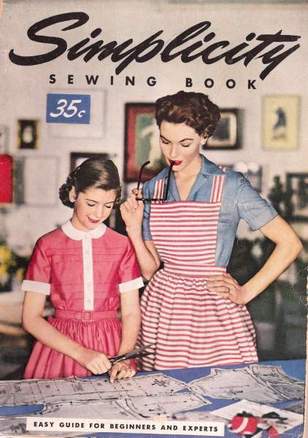 Simplicity sewing book from the 1950s (courtesy of Simplicity). Even though I’ve been getting frustrated with the magazine industry, one thing I still love about my job is that I get to meet and interview really interesting people. Today, I talked to a fellow sewing enthusiast (for a non-sewing related story); we chatted for a while about how her grandmother sewed and now she is teaching her granddaughter to sew. I love to hear stories like this, because it reinforces everything I talk about in Sew Retro: sewing isn’t just a skill, it’s a legacy that grandmothers and mothers and daughters have been sharing for decades. (I always feel bad that I’m leaving the men out—I’m self-conscious about it, but there’s no getting around the fact that sewing hasn’t meant to boys/men what it’s meant to girls/women.) For those of us who learned to sew from women we looked up to, sewing isn’t just about the latest collections of fabric; rather, it’s about collections of experiences—like shopping for Easter dress patterns with your grandmother or rummaging through your aunt’s scrap pile or staring at the wall of buttons when you tagged along with your mom to the fabric store on Saturday afternoon. The fabric, the notions, the accessories are just things (beautiful things, but things nonetheless); it’s those collections of experiences (my own, as well as stories of others’) that I really love. I think that’s why I’m so interested in learning about the history of sewing, and hearing people’s stories of how they learned, and how they’re teaching the next generation.
Actually, I’m so excited that in 2011 the next generation still wants to learn, especially with so much technology competing for their attention. I’m reminded of this silly anecdote my mom tells about when she had my oldest brother. Breastfeeding wasn’t encouraged then (1959) like it is now, but her mother encouraged her to do it anyway. My mom said that she said to her mother something along the lines of, “Oh, does that still work?” Sewing sort of falls into that category, too. “Does that still work?” people say. And, of course, it’s lovely to be able to say that yes, it does indeed still work.
The simple things come with deep roots. It’s a good reminder as we start this new year and create new batches of memories and experiences with our people.
First, thanks for the great shout out on the Sew Retro blog! She said such nice things about my book. I admit, when I discovered this blog (after the book was already named), I was a little nervous. But I’m glad that she saw that my Sew Retro wasn’t meant in any way to compete or steal thunder from her awesome blog (which I absolutely love, by the way!).
Okay, it’s the start of week four with the baby, and things are settling into a sort-of routine. I’ve been able to work for a few hours each morning and afternoon, which is just enough to keep up with the half-dozen or so story assignments I have. My body is getting used to functioning on less sleep, too, though I’m hoping that Georgia follows in the footsteps of her brother, Max, and sleeps through the night around six weeks.
All of this working my schedule around my kids’ schedule has got me thinking about how crafty women have been doing this for years, and how finding the balance between family and work has replayed itself again and again in each generation. Today, we have fabulously successful bloggers, fabric and pattern designers, and Etsy sellers, who also devote equal time to taking care of their families. It makes me think about the Women’s Domestic Institute, a correspondence school in Scranton, Pennsylvania that began sometime in the 19-teens, and was led for many years by Mary Brooks Picken (I have a bio sketch of her in the book). 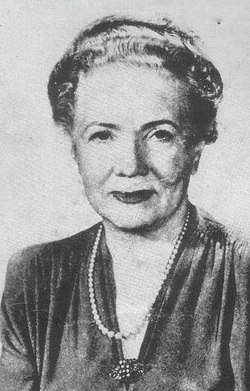 Mary Brooks Picken Through the Institute, women received sewing lessons through the mail and learned the basics of making hats, garments, and accessories. Picken (1886 – 1981) was really a visionary: she saw that ready-made garment sales were picking up steam and that fewer women were sewing. She really helped to re-brand sewing: instead of sewing being old-fashioned, she showed that it was a viable way for a woman to run a lucrative and fulfilling home-based business. Picken promoted the work-at-home seamstress lifestyle as a way for women who took care of the home and kids to make their own money. An Institute brochure from 1923 says: “Through the Women’s Institute, the way is open for any women to fit herself right in her own home, without interrupting her daily duties, to become financially successful and independent as a dressmaker.” Picken helped women see that sewing could be empowering, not just from an artistic perspective, but also financially (and many women did report making good money putting their seamstress skills to work). Picken is an inspiration all around: she was incredibly prolific, writing 96 books about all manner of domestic arts, but mostly about sewing.
It’s really not much different than what this generation of mommy-preneurs is doing, as we find the balance between family and career. It’s challenging and frustrating and rewarding, but I take comfort in knowing that scores of women before me have figured it out!
I recently did this guest post on Wonders & Marvels. It was fun to write, and I thought I'd share here in case you missed it!
In case you don’t know, sewing is what all the cool girls are doing now. This was most certainly not the case when I was 16, but sewing has made a transformation from dying art to hipster hobby. Today’s fabric is gorgeous, the patterns are fabulous, and the web sites and blogs devoted to sewing are crazy with inspiration and talent. To see other women (and young girls) embracing this activity I’ve always loved so much thrills me. But as I started to research my book, Sew Retro: A Stylish History of the Sewing Revolution + 25 Vintage-Inspired Projects for the Modern Girl, I realized sewing’s history has been a bumpy one—full of shady characters, narrow and problematic assumptions about women’s roles, and incredible flashes of talent. Let’s just say the needle and thread have been around the block a few times, and been rejected and embraced many times over in the last few centuries. A good place to start is the invention of the modern sewing machine by Isaac Singer in the early 1850s. Other inventors had tried, but Singer was the first to make it work. The descriptions I’ve read of Singer characterize him as a bit of a ladies’ man, out for a quick buck and a cheap thrill (I’m guessing people locked up their liquor and their daughters when he came to town). Nonetheless, his engineering know-how made women’s lives so much easier. Of course, is it fair that women were stuck doing all the sewing, as well as taking care of the house and the kids, with no real say in the matter? Of course not. Nineteenth-century domesticity—for all its beautiful artifacts—was no picnic. But at least a sewing machine meant women didn’t have to take every stitch by hand. Commercial sewing patterns were introduced in the 1850s (Butterick produced the first sized patterns in 1863), and by the 1890s, patterns looked similar to how they look today (directions and pattern pieces inside an envelope).
By the 1920s, sewing was starting to wane because the ready-made garment industry was growing like crazy. A whole generation of swanky flappers realized that perhaps they didn’t have to sew anymore. Organizations like the Women’s Domestic Institute (led for many years by the amazing Mary Brooks Picken) tried to show women that their sewing skills had great commercial appeal. The Institute taught women to sew (via correspondence course) and helped thousands of women start small sewing-based businesses (if only Etsy were around then!).
As an industry, sewing wasn’t in danger of folding in the 1920s and 30s, but it was limping somewhat. We have this idea that everyone must have started sewing again during The Great Depression, which isn’t exactly true. People actually just made-do with less (and mended more). It was World War II that truly rejuvenated sewing. Women sewed for the war effort (coining the phrase “Sew for Victory!”), and they also learned the amazing art of repurposing old clothes into new things (since fabric was heavily rationed). By the mid 1940s, sewing was booming again; sales were way up, and Singer Sewing Centers popped up everywhere, wooing thousands of eager teenage girls (and on that note, thank goodness Singer himself wasn’t around anymore).
We like to think the 1950s were the golden age of sewing in America, and it was definitely the height of couture sewing (because pattern companies started partnering with famous designers to offer high-end style to middle-class women). But in reality, the numbers had already started to drop. It took until the 1960s for women to really rediscover sewing again. The hippy handcraft fad of the 1970s (think macramé) kept the momentum going.
But the 1980s? Forget about it. The “me” generation wasn’t interested. It wasn’t until the late 1990s that young women started digging out their grandmothers’ machines and bright young designers pushed fabric and pattern design into the 21st century. There were about 30 million home sewers in 1997, and by 2006, the number had jumped again: the last number I was able to find was 35 million American women sewing, as reported by the Home Sewing Association (an organization that doesn’t exist anymore). What’s great about today is that women are free to sew or not sew, and to shape their own creative identities in any way they see fit. It’s that simple choice about our destiny that has made sewing more appealing than ever.
|

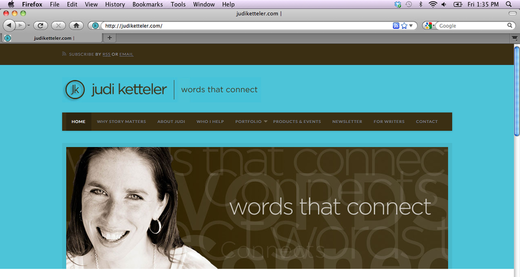
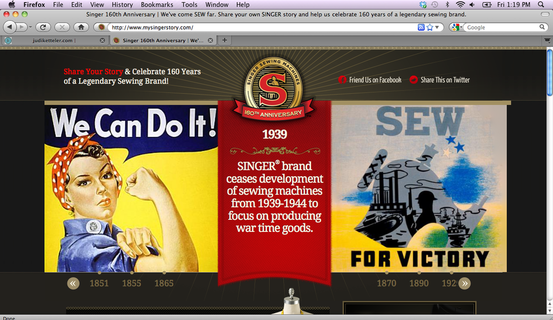
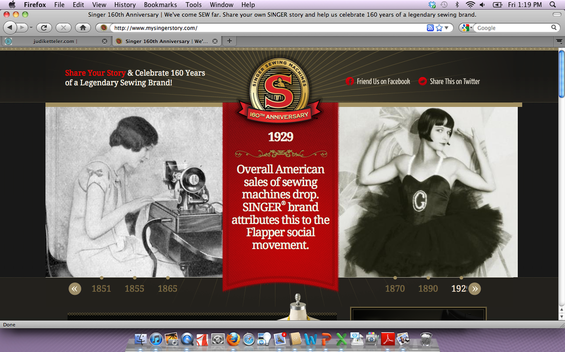
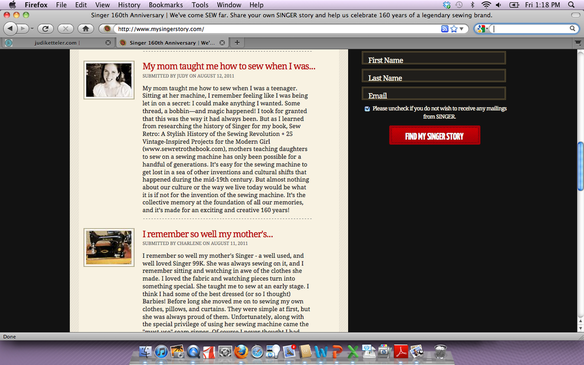

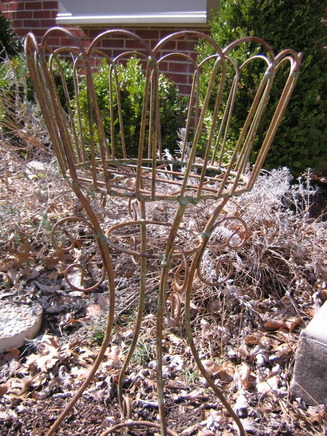
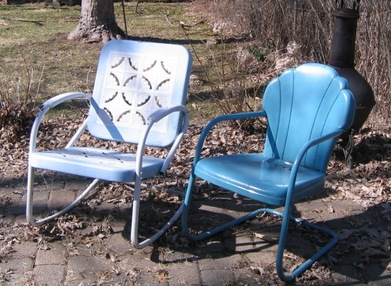
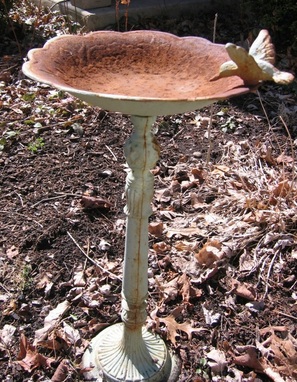
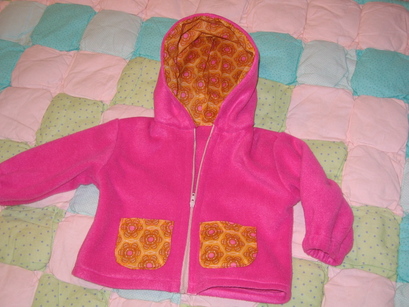
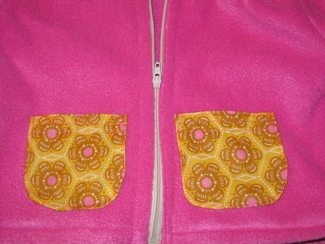
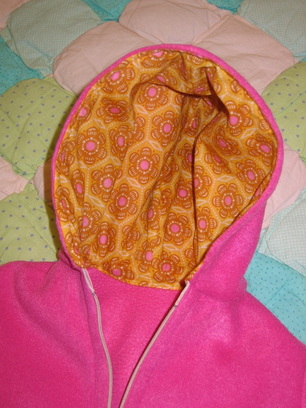
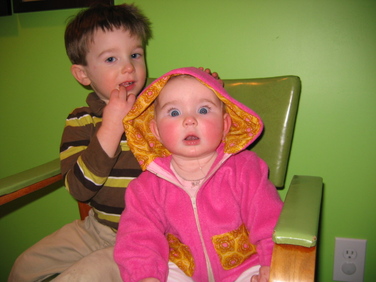
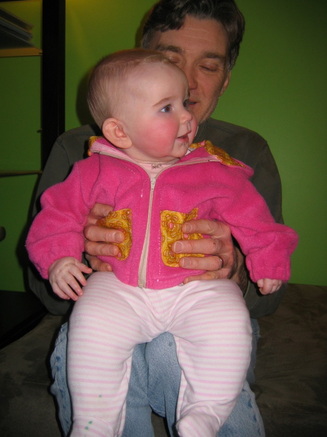



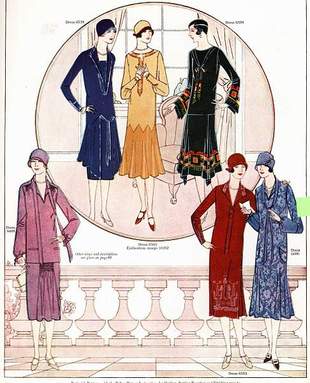
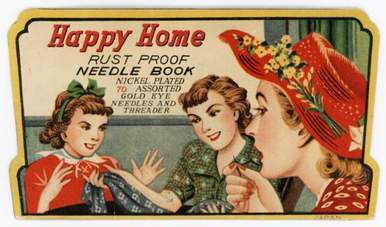
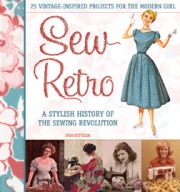

 RSS Feed
RSS Feed